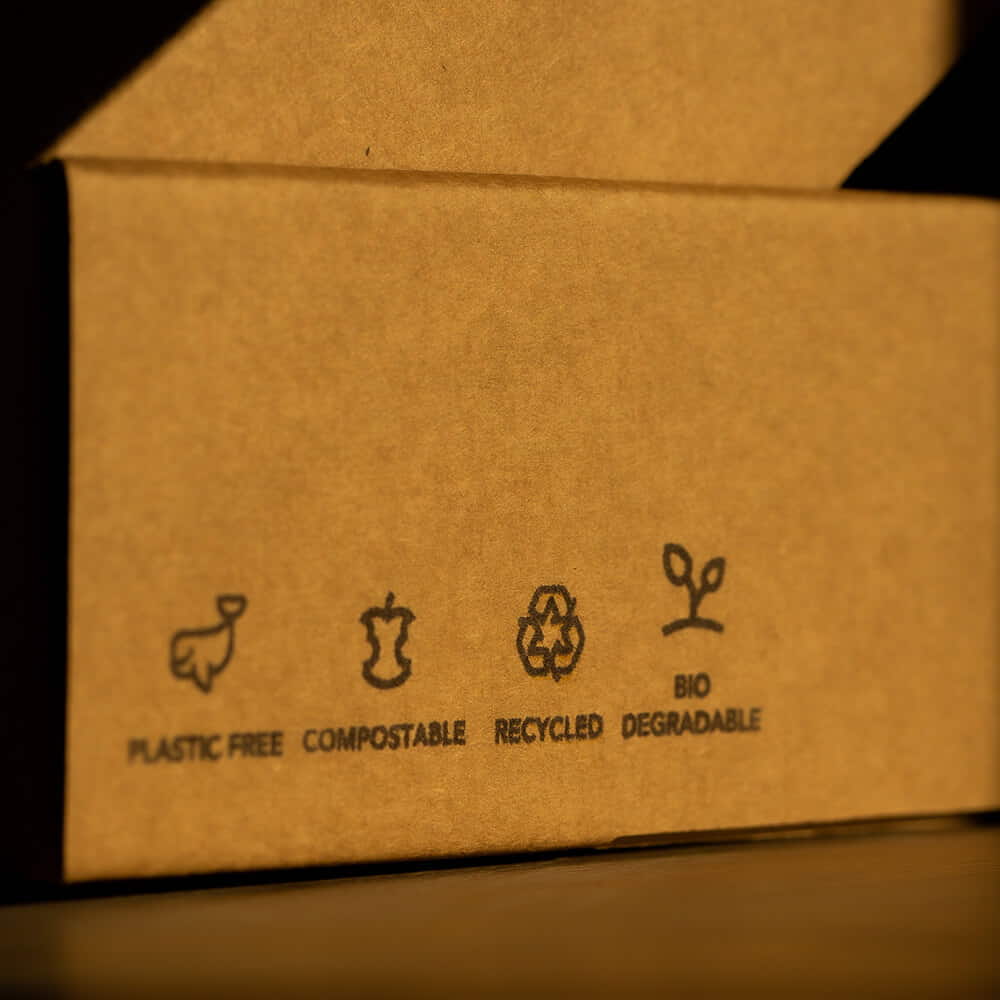Food packaging is everywhere and is vitally important when keeping your food fresh, marketing your company and during transportation. But with the planet in desperate need of our help, eco-friendly food packaging is more important than ever. Not only will it help the environment but it’ll also position your company as a sustainable one, which makes all the difference with today’s conscious consumer.

What is eco-friendly food packaging?
Imagine if you could take your existing food packaging and make it kinder to the environment – wouldn’t that be great? Well, that’s exactly what eco-friendly food packaging does! Essentially, it aims to reduce the environmental impact of packaged food by addressing the issue of plastic waste and reducing the carbon footprint when being produced. Some examples of eco-friendly food packaging include:
- Corrugated boxes
- Paper and cardboard packaging
- Glass containers
- Stainless steel
- Bamboo
- Rice husk
- Gelatin films
- Cornstarch (a good alternative to polystyrene)
Here are some common traits of eco-friendly food packaging:
- Quickly biodegrades and can be used as compost
- Made using renewable energy
- Uses recycled materials
- Made with materials that are non-toxic
- Optimises the use of energy
Why is eco-friendly packaging important?
As a business, you have a responsibility to produce products that are environmentally friendly and don’t negatively impact the planet. Whilst this isn’t a requirement, it’s important to embody this responsibility both for the environment and your customers. Modern-day consumers are increasingly aware of climate change and the ticking clock, with little time left to reverse the effects. As a business, you’ll want to position yourself as sustainable and beneficial for the environment, meaning consumers won’t feel guilty, they’ll feel good about buying your products.
When consumers purchase your food products, they want to see that it’s been packaged responsibly with materials that are recycled and biodegradable and aren’t further contributing to climate change. Customers are more informed and educated than ever about climate change. Eco-friendly packaging is no longer optional but a must for food businesses that care about the environment and their brand image.
Switching to eco-friendly food packaging can drastically reduce your carbon footprint, helping your company to contribute positively to the world.
What are the environmental benefits of eco-friendly food packaging?
Eco-friendly food packaging has multiple different positive environmental impacts, reducing waste resources and minimising your carbon footprint. Here are just some reasons why you should embrace eco-friendly food packaging:
Reduces carbon footprint
Your carbon footprint is the level of carbon dioxide you emit into the atmosphere, you can reduce this footprint by using eco-friendly food packaging. For example, if you use recycled materials, you aren’t creating new materials from scratch, reducing your CO2 emissions. Or, perhaps you choose packaging that’s made from natural materials such as bamboo or FSC-approved paper or cardboard, the growth of these products draws carbon dioxide out of the atmosphere.
If your business is journeying to becoming carbon-neutral, then eco-friendly packaging is a great place to start.
It is biodegradable
Using natural materials for your eco-friendly food packaging means that it’ll be biodegradable. Plastic packaging is not easily biodegradable and can take hundreds of years to break down, filling up our landfills and oceans whilst releasing toxic chemicals into the environment. The UK throws away a shocking 100 billion pieces of plastic packaging a year, most of which are food packages, with less than half of this being recycled. This is why eco-friendly packaging can make a huge difference. It’ll biodegrade without releasing toxins, so eco-friendly packaging is even compostable, meaning consumers can use it in their garden compost heap.
Does not produce harmful toxins
Crude oil is used to make most plastic packaging and it harms the environment in every step of its use including: extraction, refinement, distribution, use and disposal. Eco-friendly packaging poses none of these issues and won’t produce any harmful chemicals or toxins as it biodegrades. What’s more, plenty of consumers are more concerned about their health when it comes to plastic packaging. Eco-friendly packaging won’t contain any toxins or allergens, making it a much safer alternative.
It is easily disposable
Consumers aren’t always sure of how to dispose of food packaging and so can just end up throwing it in general waste, with it ending up in a landfill. Eco-friendly packaging can clearly be recycled or composted. So, consumers will either choose to place it in recycling or in their compost heap to use in their garden. Eco-friendly packaging is often higher quality than normal food packaging, so some consumers may wash and reuse the packaging for arts and crafts. Glass bottles and jars can also make great storage pots.
Eco-friendly food packaging is a must for any business that wants to reduce its carbon footprint and appeal to today’s conscious consumers. At Cater4You, we offer eco-friendly food packaging with biodegradable products, so you can sell your food with the planet in mind.
